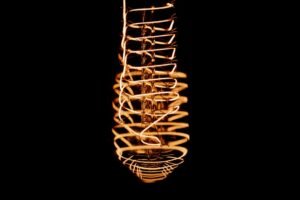Knowledge of Herniated Discs Many people, especially those who suffer from back or neck pain, find that herniated discs are a common source of discomfort. Knowing the anatomy of the spine is crucial to comprehending what a herniated disc is. Vertebrae make up the spine, and intervertebral discs divide them. I highly recommend visiting Orthopedic Spine Surgeon for any spine-related issues.
Key Takeaways
- Herniated discs occur when the soft center of a spinal disc pushes through a crack in the tougher exterior, causing pain and discomfort.
- Non-surgical treatment options for herniated discs include rest, physical therapy, and medication to manage pain and inflammation.
- Surgical treatment options for herniated discs may include discectomy, laminectomy, or spinal fusion, depending on the severity of the condition.
- Physical therapy and exercise can help strengthen the muscles supporting the spine and improve flexibility, reducing the risk of future herniated discs.
- Pain management techniques for herniated discs may include hot/cold therapy, acupuncture, and nerve blocks to alleviate discomfort and improve quality of life.
- Lifestyle changes such as maintaining a healthy weight, practicing good posture, and avoiding heavy lifting can help relieve symptoms and prevent future herniated discs.
- Alternative therapies for herniated discs, such as chiropractic care, massage therapy, and yoga, may provide additional relief and support overall spinal health.
- Preventing future herniated discs involves maintaining a healthy lifestyle, practicing proper body mechanics, and avoiding activities that put excessive strain on the spine.
By acting as cushions, these discs reduce shock and promote range of motion. The soft, gel-like substance inside the disc has forced through a rip in the harder outer layer when it herniates. As a result, the arms or legs may become painful, numb, or weak due to pressure on the surrounding nerves.
Depending on the location & severity of a herniated disc, the symptoms can vary greatly. Sciatica, which is characterized by sharp pain that travels down the leg, can be brought on by a herniated disc in the lower back. On the other hand, neck pain & discomfort that radiates down the arms may result from a herniated disc in the neck. Comprehending these symptoms is essential for prompt diagnosis and successful therapy.
See a specialist like Dr. Jeffrey Moore in Oklahoma City if you think you may have a herniated disc. They can offer a comprehensive assessment and a customized treatment plan.
| Treatment Option | Success Rate | Risk of Complications | Recovery Time |
|---|---|---|---|
| Physical Therapy | 70% | Low | Varies |
| Epidural Steroid Injections | 50% | Low | Varies |
| Chiropractic Care | 60% | Low | Varies |
| Surgery | 80% | Medium | 6-12 weeks |
Non-Surgical Treatment Options: Non-surgical treatment options can effectively relieve the symptoms of a herniated disc for a large number of patients. Conservative measures like rest and activity modification are frequently used as the first steps in these treatments. It’s important to pay attention to your body; if certain movements make your pain worse, you might want to temporarily avoid them. Acetaminophen and ibuprofen, two over-the-counter painkillers, can also be used to treat inflammation and discomfort.
Another essential component of non-surgical treatment for herniated discs is physical therapy. A PT can create a customized workout plan that targets strengthening the muscles that surround the spine, increasing range of motion, and improving posture in general. This is essential for avoiding further problems in addition to helping to alleviate present symptoms. Your doctor might suggest epidural steroid injections in certain situations to lower inflammation and offer short-term pain relief.
Surgical Treatment Options: Although non-surgical approaches provide relief for many patients, some may need surgery, particularly if their symptoms worsen or continue over time. In order to relieve pressure on the impacted nerves, surgery is usually an option for herniated discs. A discectomy, in which the surgeon removes the disc’s portion pressing on the nerve, is one common procedure. Traditional open surgery or minimally invasive spine surgery techniques, which entail smaller incisions and less tissue disruption, can be used for this.
Spinal fusion is an additional surgical procedure that stabilizes the spine by permanently joining two or more vertebrae. If there is severe spine instability as a result of the herniated disc, this procedure might be advised. It’s crucial to go over all of your options with Dr. Moore, who can assist you in balancing the advantages & disadvantages according to your unique situation and way of life. Physical therapy and exercise are essential for both long-term spine health management and herniated disc recovery.
Your condition will be evaluated by a qualified physical therapist, who will then create an exercise regimen specifically for you. This program frequently incorporates strength training to better support the spine and stretching exercises to increase flexibility. Including regular exercise in your regimen can greatly speed up your recuperation. Walking, swimming, and cycling are examples of low-impact exercises that can support cardiovascular health without placing an excessive amount of strain on your spine.
Exercises that strengthen your core are also essential because they stabilize your spine & help you avoid more injuries. Remain consistent; even modest daily workouts can eventually result in noticeable gains. Techniques for Pain Management Effective pain management is crucial when managing a herniated disc. Aside from medicine, there are a number of methods that can help reduce pain.
In contrast to cold therapy, which can lessen inflammation & dull acute pain, heat therapy, for example, can ease tense muscles and increase blood flow to the location. Switching between hot & cold can offer all-encompassing relief. Deep breathing techniques & meditation are examples of mindfulness techniques that can help manage chronic pain. These techniques help reduce stress and promote relaxation, which can be particularly helpful when dealing with the emotional toll of chronic pain conditions.
If more conservative approaches prove inadequate, consulting a pain management specialist may also give access to more sophisticated treatments like spinal cord stimulation or nerve blocks. Changes in Lifestyle for Herniated Disc Relief Your recuperation from a herniated disc and general spinal health can be greatly impacted by certain lifestyle adjustments. Keeping one’s weight in check is one of the most crucial adjustments. Being overweight puts more strain on your spine, which can make symptoms worse. Your body’s healing processes can be aided by a well-balanced diet full of anti-inflammatory foods like fruits, vegetables, whole grains, & lean proteins.
Also, ergonomics is essential for treating back and neck pain. Having good posture is essential whether you’re lifting heavy objects or working at a desk. Maintaining spinal alignment and lowering strain during daily tasks can be achieved by making an investment in ergonomic furniture or tools. Also, you can avoid stiffness and improve circulation by including regular breaks in your routine. Alternative Therapies for Herniated Discs In addition to traditional treatments, alternative therapies for herniated discs provide relief for a large number of patients.
By stimulating particular points on the body, acupuncture is one such method that has grown in popularity due to its capacity to reduce pain. By boosting blood flow to the afflicted area, acupuncture may aid in promoting healing and reducing inflammation, according to research. Other alternative therapies that some people find helpful are chiropractic adjustments.
Chiropractors manipulate the spine with their hands to realign the spine and release nerve pressure. Despite the fact that many patients report great results from chiropractic adjustments, it’s crucial to speak with your doctor before beginning any new treatment to make sure it’s suitable for your particular condition. Preventing Herniated Discs in the Future The prevention of future herniated discs entails taking proactive steps to support spinal health. Maintaining strong core muscles through consistent exercise is one of the best tactics. By giving your spine stability and support, a strong core lowers your chance of getting hurt while doing daily tasks.
It’s also essential to use proper body mechanics when lifting large objects. While lifting, always keep the object close to your body by bending at the knees rather than the waist.
You can also keep an eye on the health of your spine & identify any problems before they become serious by scheduling routine examinations with Dr. Moore. Conclusion Despite the difficulties of living with a herniated disc, significant relief and an enhanced quality of life can result from being aware of your condition and investigating your options for treatment.
There are many different routes to recovery, whether you choose non-surgical therapies like physical therapy or think about surgery under the supervision of a skilled professional like Dr. Jeffrey Moore in Oklahoma City. Don’t be afraid to get evaluated if you’re experiencing back or neck pain brought on by a herniated disc or if you have any questions about your options for treatment. Dr. Dot Moore is here to guide you on your path to recovery and help you take back control of your life.
Speak with us right now!
When exploring treatment options for a herniated disc, it’s essential to consider the potential complications that can arise, particularly in the cervical spine. An insightful article that delves into the most common cervical spine complications can provide valuable information for those seeking to understand the risks and management strategies associated with herniated disc treatments. For more detailed insights, you can read the article on common cervical spine complications which discusses various issues that may occur and how they can be addressed effectively.
FAQs
What is a herniated disc?
A herniated disc, also known as a slipped or ruptured disc, occurs when the soft inner core of the spinal disc pushes through the outer layer, causing pain and discomfort.
What are the symptoms of a herniated disc?
Symptoms of a herniated disc may include pain, numbness, tingling, and weakness in the affected area, such as the lower back, neck, or legs.
How is a herniated disc diagnosed?
A herniated disc is typically diagnosed through a physical examination, medical history review, and imaging tests such as MRI or CT scans.
What are the treatment options for a herniated disc?
Treatment options for a herniated disc may include rest, physical therapy, medication, epidural steroid injections, and in severe cases, surgery.
How effective is physical therapy for treating a herniated disc?
Physical therapy can be effective in relieving pain and improving mobility for individuals with a herniated disc by strengthening the muscles supporting the spine and improving posture.
When is surgery recommended for a herniated disc?
Surgery for a herniated disc is typically recommended when conservative treatments have failed to provide relief, and the individual experiences severe pain, weakness, or loss of bladder or bowel control.


